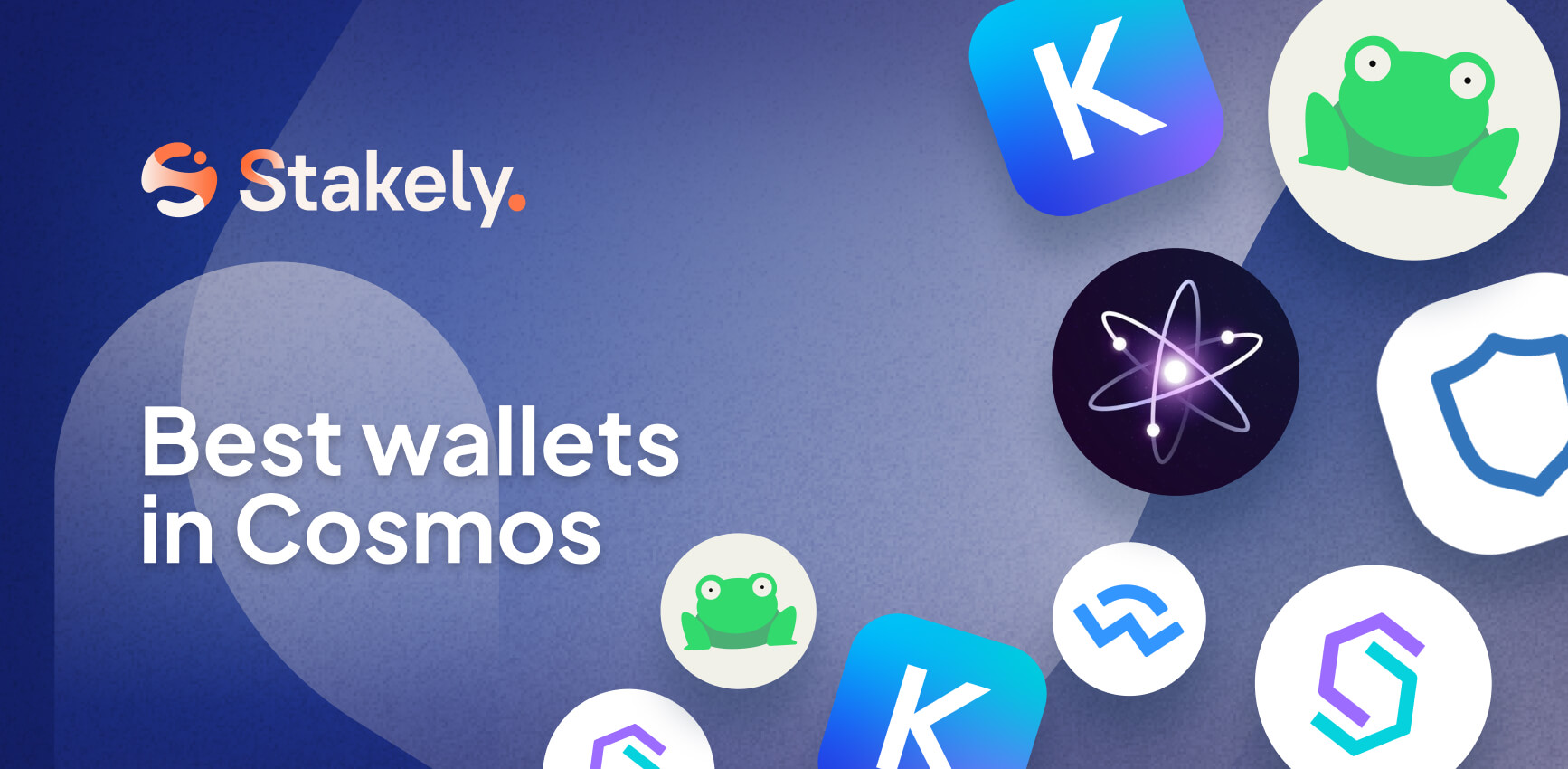Comparing Liquid Staking protocols in the Cosmos Ecosystem

Today we will introduce the different liquid staking protocols in Cosmos and take a deeper look at them in order to understand how they are revolutionising the crypto environment.
Introduction
Undoubtedly, this is an important milestone for both DeFi and staking. If you were undecided between staking and trading on DeFi, liquid staking offers a unique solution.
But what is liquid staking? For those who are not yet familiar with this concept, liquid staking allows you to stake your tokens and receive rewards while providing security to the network; and at the same time, provides you with a derivative token “receipt” with which you can operate on DeFi platforms.
In addition to the main advantages of liquid staking, this mechanism provides viability to interchain, since being able to use these derived tokens in other networks of the ecosystem, as is the case of Cosmos Hub and its provider chains, not only provides security to the main network, but also to the networks in which you participate.
Who offers liquid staking? These are the main liquid staking protocols in the Cosmos ecosystem
Next, we will present some of the main liquid staking protocols existing today in Cosmos and the main differences between them. Other major networks already offer this type of service, for example Ethereum with Lido or StaFi, or Solana with Marinade. But without a doubt, the largest offer of liquid staking solutions can be found today in the Cosmos ecosystem.
Stride, conquering Defi as a goal
Stride is a liquid staking platform that places special emphasis on DeFi security and intends to make its derived token the main asset in DeFi of the Cosmos ecosystem.
Currently ATOM, STARS and JUNO are the only tokens supported by the platform, although it is planned to soon support others such as OSMO once its implementation with Interchain is completed. In addition, any token in the ecosystem using IBC V3 can be added via a governance proposal, so Stride’s capabilities are expected to gradually increase.
Staking rewards are automatically accrued, i.e. you will not have to claim them, and this accrual will be reflected in the value of your stToken derived token, which will increase its value against the token initially delegated in the protocol.
The main utility of its derivative token stToken is that it can be sold or transferred without having to wait for unbonding periods of the staked token, besides being able to participate in DeFi and provide liquidity to pools such as ATOM/stATOM in Osmosis and obtain additional benefits. It will soon bring new integrations and can be used as collateral among other possible functionalities, we will keep you posted!
Quicksilver, decentralization and governance
Quicksilver is a sovereign, permissionless liquid staking protocol from the Cosmos ecosystem, and like Stride, it is scalable to any network using IBC.
At its launch, which will take place soon, liquid staking will be available for Cosmos, Osmosis and Juno!
Quicksilver’s liquid staking is powered by Interchain Accounts (ICA) and Liquid Staking Module (LSM). What makes Quicksilver special is that it is permissionless, so it can easily add new Cosmos SDK-based blockchains into its liquid staking zone. In addition, it is fully decentralized, as all the tokens from the protocol will be distributed among the community eligible for its airdrops and early investors.
When users stake their tokens on Quicksilver, they receive a derivative token represented as qTOKEN. These derivative tokens can be used in DeFi protocols or redeemed for their original assets at any time, along with any staking rewards accrued during the time that derivative has been held.
One of the benefits of interchain accounts is that users’ tokens never leave the native network, which provides an extra layer of security that many users are concerned about when it comes to liquid staking. Instead, the tokens are added to the Quicksilver’s interchain account on that native network.
Users who do liquid staking through Quicksilver to not only receive staking rewards from the network of their choice, but also from QCK inflation issues as an incentive.
What is QCK? This is Quicksilver’s native token and is used to secure the network through staking, vote on governance proposals, and pay transaction fees on Quicksilver.
Developers will be pleased to know that they intend to enable CosmWasm in their first update, which will allow developers to build on top of the Quicksilver blockchain as well.
Neutron, Smart Contracts secured by Cosmos Hub
Neutron itself is not a liquid staking protocol, but any protocol is welcome in your network, including liquid staking protocols. It will be those liquid staking protocols that integrate with your network that, through Neutron, will provide the liquid staking service.
This is the case of Lido, the first protocol that will create a Liquid Staking implementation framework for Interchain. This, they intend to achieve by using Interchain Accounts (ICA), IBC and Interchain Queries (ICQ) so that any ICA-enabled network can build a solution on top of Liquid Staking. Lido was developed under a DAO community governance model and already supports networks such as Ethereum, Solana, Kusama, Polygon and Polkadot.
pStake, developed by Persistence
pStake is a liquid staking protocol that supports either the BNB, Ethereum, Persistence or Cosmos Network. The smart contracts responsible for issuing the pASSET and stkASSET derivative tokens belong to the Ethereum network. pStake’s goal includes driving mass adoption of the derivative tokens it generates through its use on DeFi platforms.
The PSTAKE token makes it easy to access Ethereum’s DeFi, although you can also burn and get ERC-20 stkASSETs from protocol-compatible networks, and in turn, accumulate staking rewards in the form of pASSETs.
What’s more, the pStake Finance team has announced that stkATOM’s liquid staking is coming to the Cosmos ecosystem via the Persistence Core-1 Chain. Thanks to the liquid staking module of the Persistence network and the Interchain Accounts (ICA) and Interchain Queries (ICQ), liquid staking will not be done via smart contracts, which is an extra security feature, just like in Quicksilver.
StakeEasy, simply, quick and efficient
On the other hand, there is StakeEasy, a liquid staking protocol of the Secret Network that aims to preserve privacy on the network. In addition to its native and governance token EASY, StakeEasy has its own derivative token, the seTOKEN.
StakeEasy also has a community farming tool that will provide users staking SCRT through StakeEasy the opportunity to obtain the EASY governance token. This initiative ended in May this year, and was divided into 3 phases: during the first three weeks, 1 SCRT would equal 14 EASY; during the next three weeks, they went on to give out 12 EASY for every 1 SCRT; finally, the last three weeks gave 10 EASY for every 1 SCRT.
Recently, they successfully launched their liquid staking on Juno’s testnet, allowing Juno to make a smooth mainnet launch in August. StakeEasy has for Juno a derivative token combination system. That’s right, StakeEasy has a derivative token linked to the staked tokens plus autocompound, seJUNO, and a manual reward claim token, bJUNO. Users can decide which one to use and swap them at their convenience according to their usage needs at any given time.
JUNO and SCRT liquid staking are already live, with plans to later add major Cosmos network assets such as ATOM, OSMO, AKT… And all through Interchain Accounts and IBC!
They have also been integrated into the Sienna network, where you can provide seSCRT liquidity to the sSCRT/seSCRT pool, and other platforms such as JunoSwap or Osmosis in the case of seJUNO.
StaFiHub, the voice of experience
StaFiHub is presented as the first DeFi protocol to use liquid staking assets and its main goal is to increase liquidity of staking tokens and their usability. They already talked about liquid staking in their blog in 2019, and now it supports tokens from many networks, such as ETH, FIS, BNB, DOT, ATOM, SOL, MATIC or KSM.
Its native token is FIS and its derivative token is rToken, which can be minted by delegating your tokens in staking smart contracts from StaFi. This token is native to Substrate, but StaFi developed a bridge that connects Ethereum, Solana, Cosmos and StaFi’s own native network.
Regarding the usability of StaFi rTokens, in addition to operating in DeFi, you can use them as a good bridge option between blockchains from different ecosystems.
Conclusion
What is the best liquid staking protocol? As always, it will depend on the token you want to stake and what is important to you in a protocol. From a technical point of view, they are all great projects with very good purposes. Liquid staking opens the door to endless possibilities, you just have to choose your cards wisely and consider what your priorities are: do you want your rewards to autocompound, or perhaps you prefer a network-native liquid staking protocol? You decide! That’ s it for the small catalogue of liquid staking options, we hope you found it helpful!





